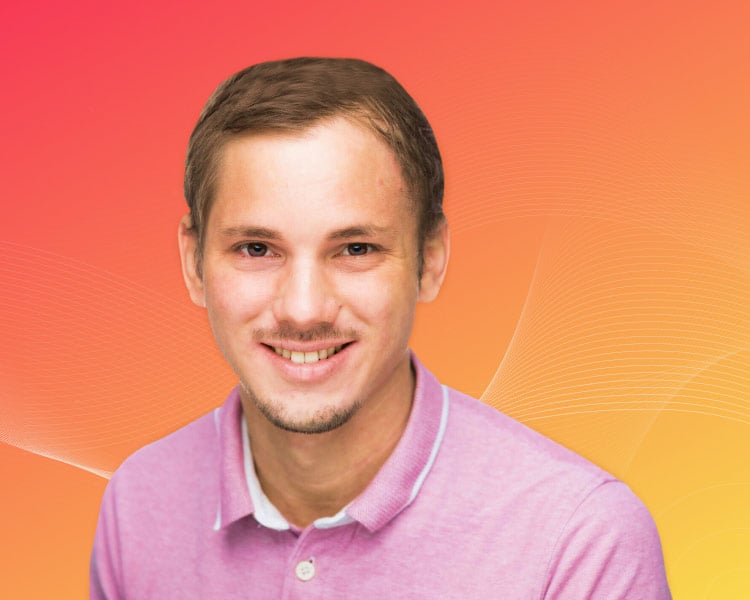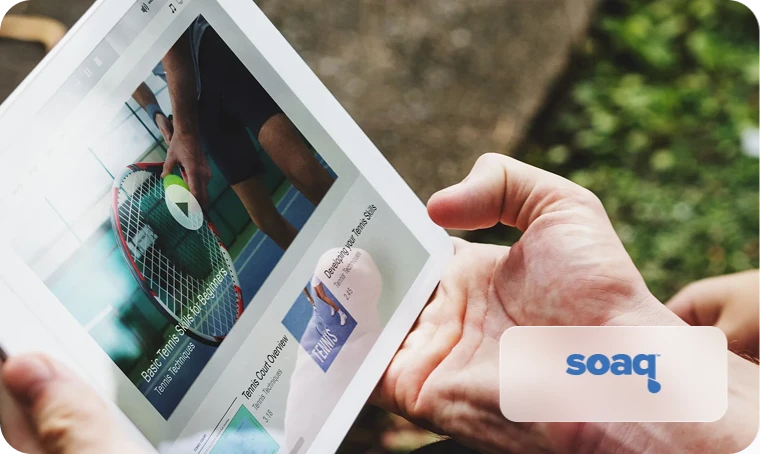Building a profitable product that users love may sound like a maze if you aren’t a tech giant.
But, it isn’t if you follow the right strategies and have a clear baseline. Let’s hear it through the words of Laurin Stahl – Project Manager at Fave – in our series of conversations with experts in product development and project management.
Being a consumer as well as business-facing platform, it wasn’t at all easy to build Fave, which today has millions of active users and a 4.7-star rating on the App Store. The journey of building this amazing product was full of ups and downs, learnings, and unique challenges, said Laurin.
Abhi Garg (CRO at Net Solutions) hosted this insightful podcast and tried to keep the essence of this entire conversation in a Q&A format to help budding entrepreneurs and product managers find answers to questions they might have in their minds when building their own products.
So let’s get started and deep dive into the magic of how to build products that scale:
About Laurin Stahl
Laurin works as a Senior Product Manager at Fave. He is basically from Germany but lives and works in Malaysia. While Laurin studied to be a scientist, destiny had some different and amazing plans for him.
When he was on a break before completing his Masters, he got a one-year placement in an organization called AIESEC – a global non-profit organization, which connects young people from all around the world to provide leadership development experiences through volunteering.
It was the first time Laurin worked with IT professionals and engineers, and he loved his job very much. According to him, AIESEC helped him discover his way to product development and management.
“The job at AIESEC made me believe that work is not just something that you do to pay your bills. It is something that you enjoy doing” – Laurin Stahl
Laurin’s job at AIESEC was challenging as engineers out there were volunteering for a non-profit organization, and it was hard for him to inspire them to put in hours and build products that users love. But, Laurin tried and did all that it took to lead the operation at AIESEC.
After working there for around three years, he left that job and joined Fave.
About Fave
Fave is an online platform created by Fave Asia Technologies that provides amazing discounts, deals, and offers on things to eat, see, and do in a city. It operates in several cities across Malaysia, Indonesia, and Singapore.
The brand first started with its main product – KFit, which offered discounts and access to fitness activities in 2017. In the same year, they launched FavePay, an online-to-offline payment platform that consumers can use to pay at brick-and-mortar stores by merely scanning a QR code.
They also have a digital platform for merchants called FaveBiz that help SMEs grow their business. It allows merchants to accept payments, acquire new customers, retain the old ones, create marketing campaigns, and do many more things to expand their business and grow sales. According to Crunchbase, Fave raised money in the middle of a pandemic, bringing its total funding to $32 Million on July 22, 2020.
Highlights of the Conversation
Product Management is all about People Management
As a successful product manager, Laurin shares how people are essential to the development of a product. He believes that products aren’t built-in vacuums. Developing successful products requires efficient collaboration between designers, engineers, and product managers, and that’s why leadership skills are necessary if you are building a product.
Successful products are not just about your ideas. They require collaboration with different stakeholders in your company – Laurin Stahl
He also says that, at Fave, they consider every stakeholder’s feedback before rolling out any new feature or functionality in the platform. They even talk to merchants before launching something new and consider addressing their hopes, fears, and reactions to it. He believes that successful products require support and feedback from everyone in the company and also gives an example to explain why.
How to Build Products the Right Way: Discovery Process
As per Laurin, it is crucial to find out what’s required to build products that scale. However, the process of discovering what’s needed is different depending on whether you are building a new product or you are tweaking an existing product.
For example, he says, Fave suffered from COVID’s impact in early March when lockdown happened, and their business was flatlining. To revive their business, they went to discovery mode and started finding:
- What are their competitors doing?
- How are other products in the market structured?
- What’s the pricing strategy that is being followed in the market?
- What are merchants looking for?
They started interviewing the merchants, proposed solutions to their problems, and noted their reactions. They then discussed all the solutions in their internal teams to figure out what can be implemented, what is technically feasible, and what will be the opportunity cost of the solution.
Once all these aspects have been discussed and finalized by all the stakeholders, they would start creating wireframes, designs, and user journeys to build the solution the right way.
However, the discovery for products that the users actually use should go on with the help of data that you are currently collecting. For example, transaction data or user behavior data. PMs can analyze this data and find bottlenecks to solve them with the help of brainstorming sessions.
Financial Components
When asked about Fave’s Financial Components, Laurin says that a product should be profitable and sustainable to stay and grow in the market. He says that even though Fave is not as profitable as many of its competitors, his company has a clear roadmap to profitability, which matters.
For example, he says that Fave being a payment aggregator, has to pay an MDR on the top of every transaction to the company that facilitates them. But, they always make sure that every transaction has a profit margin for them.
He also says that they don’t drive crazy profits out of their product, but, at the same time, they also make sure that no transaction happens at a loss for them. To scale, they always focus on increasing the number of transactions.
Another revenue stream for Fave is its Loyalty feature. They give customers exciting cashback or loyalty points on every deal (funded by merchants). But, these loyalty points come with an expiration date. If a customer does not claim these points or cashback on time, the payment goes to Fave.
The Difference b/w a Product and a Platform
Laurin says that a product can be a platform, but it doesn’t have to be one. He also says that a platform is like a vessel that gives space to or facilitates products’ existence. To further explain the same, he also provides an example of selling shoes online, describing how and when a product changes into the platform.
If the value is exchanged b/w multiple parties – it’s a platform. If the value is exchanged b/w two parties – it’s a product – Laurin Stahl
Find more about how digital products differ from digital platforms in Net Solution’s comprehensive blog on Digital Products Vs Digital Platforms.
The Future of Fintech Startups
Laurin believes that it is hard to beat the experience of paying using a card. The speed, convenience, and security it provides are unmatchable. However, in the financial space, along with the focus on building robust tech, startups should also have an eye on building their business models profitable. He says even big giants in the digital payment ecosystem are burning cash nowadays.
All in all, he advises that if you build a product that matches the level of convenience cards provide and run it using a profitable business model, it can prove a win-win for your business.


